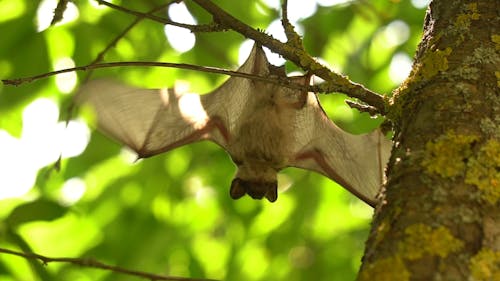Bats are fascinating creatures that have captured the imaginations of humans for centuries. They are the only mammals capable of sustained flight, and their unique adaptations have allowed them to occupy a wide range of ecological niches across the world. In this article, we will explore the biology, behavior, and conservation of bats, as well as their interactions with humans.
Biology of Bats
Bats belong to the order Chiroptera, which is divided into two suborders: Megachiroptera (also known as fruit bats or flying foxes) and Microchiroptera (also known as echolocating bats). Megachiroptera are primarily found in tropical and subtropical regions and feed on fruit and nectar, while Microchiroptera are found in a wider range of habitats and have a diverse diet that includes insects, small mammals, fish, and even blood in some species.
One of the most remarkable adaptations of bats is their ability to fly. Their wings are made of a thin membrane of skin stretched over elongated fingers and a greatly elongated arm bone. This structure allows bats to generate lift and maneuver in the air with great precision. Additionally, many species of bats have evolved the ability to use echolocation to navigate and locate prey in the dark.
Behavior of Bats
Bats are primarily nocturnal animals, although some species are crepuscular (active at dawn and dusk) or diurnal (active during the day). They roost in a variety of locations, including caves, trees, buildings, and even underground. During the day, bats can be found hanging upside down in their roosts, conserving energy until it is time to forage at night.
Bats are social animals and often live in colonies that can number in the thousands. Within these colonies, individuals communicate through a variety of vocalizations and scent signals. Bats also exhibit a range of interesting behaviors, including huddling together for warmth and sharing food with other members of the colony.
Conservation of Bats
Despite their ecological importance, bats are facing numerous threats to their survival. Habitat loss, climate change, and the use of pesticides and other toxins are all contributing to declines in bat populations worldwide. Additionally, bats are often misunderstood and feared by humans, which has led to persecution and destruction of their roosts.
Conservation efforts for bats include protecting their habitat, reducing pesticide use, and educating the public about the important roles bats play in ecosystems. In some cases, researchers are also working to develop alternative habitats for bats, such as artificial roosts, to help mitigate the impacts of habitat loss.
Interactions with Humans
Bats have a complex relationship with humans. While they are often feared and misunderstood, they also provide important ecological services, such as pollination and pest control. In many cultures, bats are also considered to be symbols of good luck and prosperity.
Unfortunately, bats are also associated with several diseases that can be transmitted to humans, including rabies and SARS-CoV-2, the virus that causes COVID-19. It is important to take precautions when interacting with bats or entering areas where they are known to roost, such as wearing protective gear and seeking medical attention if bitten or scratched by a bat.
Conclusion
Bats are a fascinating group of animals that play important roles in ecosystems worldwide. Their unique adaptations and behaviors have captured the imaginations of humans for centuries, but they are also facing numerous threats to their survival. Through conservation efforts and increased public education, we can work to protect these valuable creatures and ensure their continued presence in the world.


Comments
Post a Comment